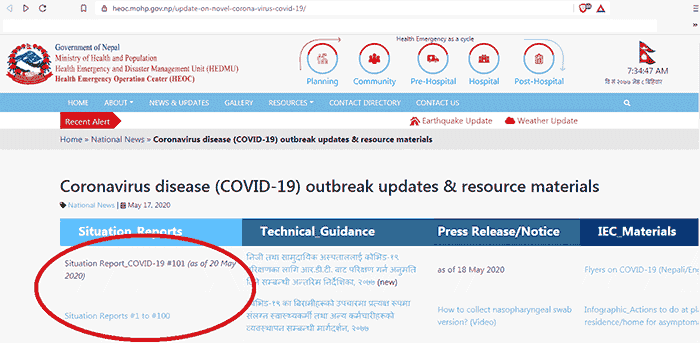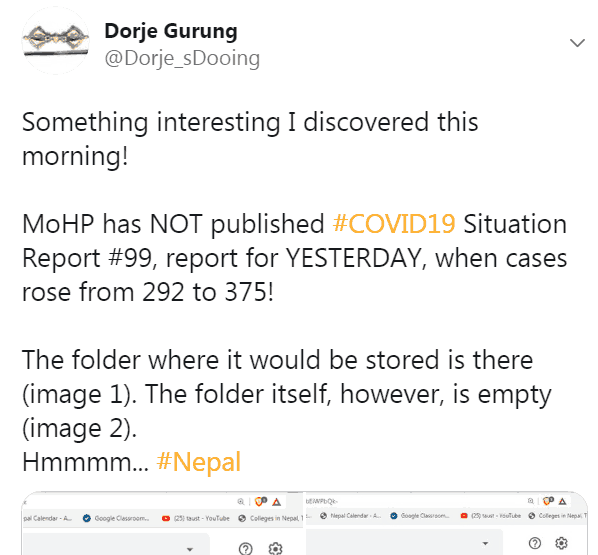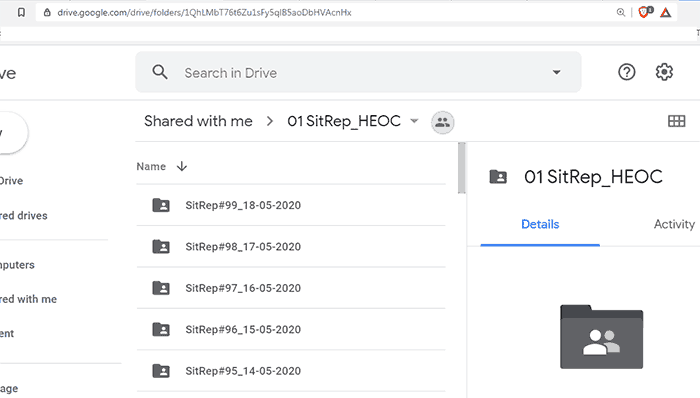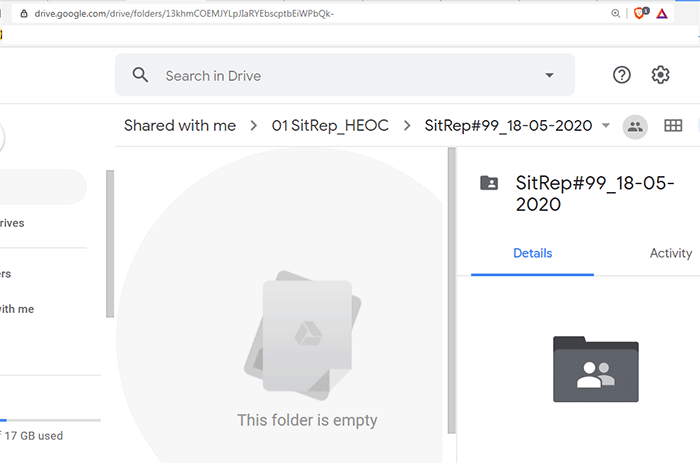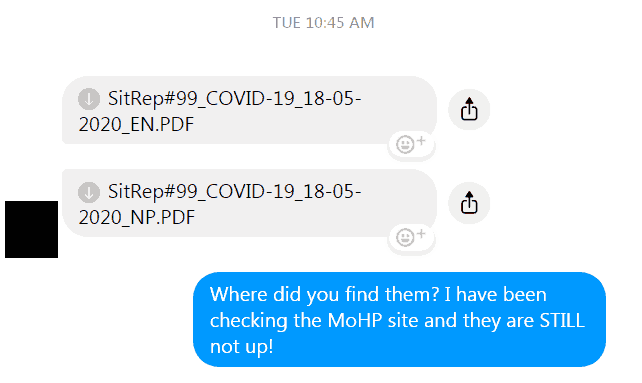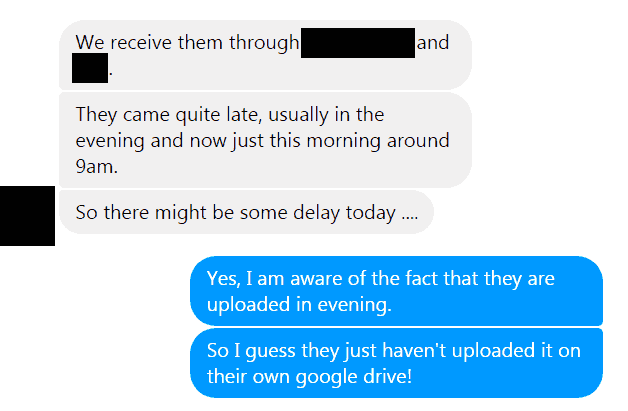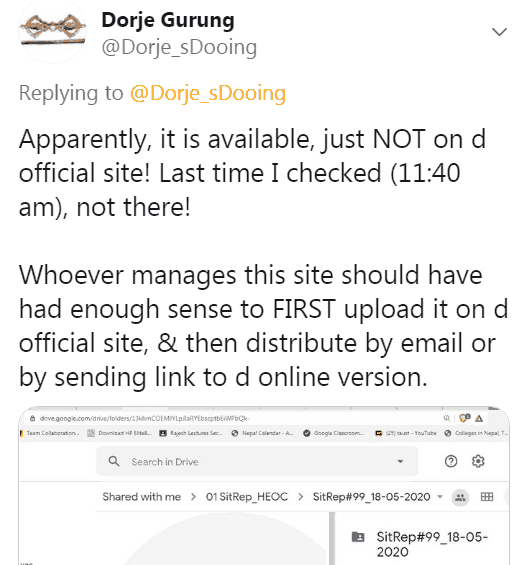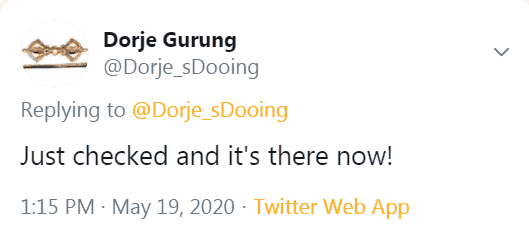Coronavirus pandemic has revealed starkly, again, how and why our system of governance has failed us for the last 70 years, following the toppling of the feudal Rana-family oligarchs. For the last thirty years, we have had a democratic form of governance. The officials, mostly, have been elected to their office or recruited by officials and their political parties. And yet, or maybe not surprisingly, the mind-set of those in position of power and influence — in addition to mostly being Khas-aryas — even now during these trying times of the coronavirus pandemic are still in many ways like those during the Rana rulers before 1951 and Shah rulers after them until 1990.
They seek power and money. They did that even in the aftermath of the biggest natural calamity to hit the country in living memory — the quakes of 2015. They are doing that even now during these times of the coronavirus pandemic.
The utter disregard for their responsibilities towards the citizens of the country continues to just be the norm, for example. Forget about having a strategy!
Forget about even doing little things right, such as publishing the COVID19 situation report on time and first on the official information page, a reflection of the casual attitude we have towards time. among other things.
I maintain a spreadsheet and chart the progress of a some of aspects of the coronavirus pandemic — number of tests performed, number of cases, tests per million, number of fatalities etc. My source for the data is the official situation reports (circled in the image below) published by the Ministry of Health and Population (MoHP) on their COVID19 page.
Visiting the page the morning of May 19, I didn’t find the Situation Report for the previous day, report #99. I went ahead and tweeted about it at at 9:42 am after taking screen shots.
The preceding day had seen the single biggest jump in the number of cases. So I said, “Something interesting I discovered this morning. MoHP has NOT published #COVID19 Situation Report #99, report for YESTERDAY, when cases rose from 2929 to 375!”
Next, I described what I came across: “The folder where it would be stored is there (image 1). The folder itself, however, is empty (image 2).” I rounded it off with “Hmmmm…#Nepal.”
Here’s a reproduction of image 1.
Here’s a reproduction of image 2.
I pretty much reproduced the tweet on Facebook which led to a friend telling me that it was indeed available! She sent it to me on Messenger (see image below)! So it had actually been prepared and available! (Notice it was 10:45 am when she sent it to me and it still hadn’t been published in the official site.)
Turns out, two — one international and the other Nepali — organizations had emailed it to her!
Checking the Google Drive Situation Report #99 folder again at 11:40 am, I discovered it still hadn’t been uploaded. So at 11:56 am I tweeted the following: “Apparently, it is available, just NOT on the d official site! Last time I checked (11:40 am), not there!” I also added the more important point: “Whoever manages this site should have had enough sense to FIRST upload it on d official site, & then distribute by email or by sending link to d online version.”
I understand and am completely aware of the fact that technology in Nepal is NOT consistently reliable, that anything can go wrong. That some days you just might not be able to get online and upload something as important as a situation report by the deadline. But that does NOT appear to have been the case here.
Regardless, I continued to refresh the link to the Google Drive Report #99 folder. When the report finally showed up, it was 1:15 pm. I know because I tweet about it right away saying, “Just checked and it’s there now!”
I am completely aware of the fact that many in Nepal might not take any issue with this, and even scoff at me for making a big deal out of a small matter such as this! Regardless, I am pretty certain that those responsible for uploading the document on the Google Drive really don’t view uploading it at or by a certain time as being important. Plus, they likely don’t see any difference between uploading to the drive first and emailing it to the subscribers etc. and doing the reverse. Or, they probably don’t think uploading it so late reflects badly on the Ministry or, worse, even knows or cares it reflects badly on the ministry.
Starting or ending events/functions or completing things by a deadline or within a given time frame is generally NOT viewed as of much importance or value. Nepalis in general view time as circular and fluid and therefore as an expendable commodity, as opposed to straight and fixed. That is part of the reason I take issue with it.
Another reason I take issue with it is because, what happened, for one, also reflects the kind of lassaiz faire attitude and thinking a majority of Nepalis have towards most things in life! For another, this kind of attitude and thinking is one of the many reasons behind our struggles as a people and society to make progress — social, economic, and political progress. Unless we change this attitude (as well as a number of others), we will continue to struggle to move forward just as we have always done.
June 29 Update
MoHP has NOT published situation reports for June 27 & 28. Yesterday, they hadn’t published report for June 26 either (see tweet above).
Here’s curious thing though! Site now (9 am June 29) says situation report for June 26 was uploaded Friday 11:41 AM! What is going on?#Nepal pic.twitter.com/v0JfYA9mbZ
— Dorje Gurung (@Dorje_sDooing) June 29, 2020

